Meditation in Thailand
Contents
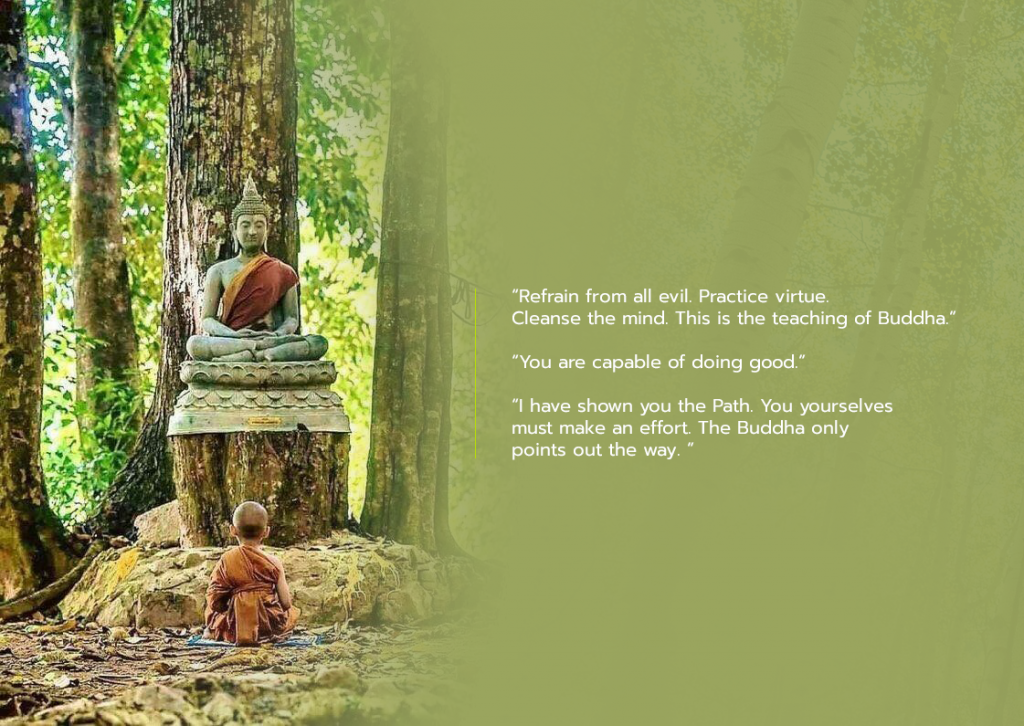
(Photo credit: https://bit.ly/2TIL1zV)
| Disclaimer: This is an article on Buddhism, a major global religion and system of beliefs with a complex history of more than 2,600 years. It is written to the best of the author’s knowledge. The intention of this article is to introduce Buddhism to readers, particularly in regards to its founder, history, doctrines, and usefulness through meditation. Many hyperlinks and reference video clips are suggested under each section in order to facilitate the readers’ further exploration of the Buddhist world and to allow them to reap the benefits of meditation. There is by no means an intention for this article alone to cover all subjects of Buddhism exhaustively. Note on the Pali terms used in the article: Originally, the Buddha’s Teachings were recorded in the Pali language. English translations of these terms sometimes vary. The author therefore finds it necessary to occasionally recall these original terms in parentheses, so that the readers may have reference to the original term where it may be useful. The author is extremely grateful to Phra Thepsakyawongpundit (Anilman Dhammasakiyo) for some comments. |
Meditation in Thailand
All Buddhist lineages agree that the truths of Buddhism were discovered by the Buddha in the course of his meditations, particularly underneath the Bodhi Tree at Gaya. Meditation (see hyperlink pp. 1359 – 1450 for more details) has a crucial role in the lives of Thai Buddhists. They use meditation to seek happiness ranging from simple happiness on a mundane level (Pali: lokiya-sukha) up to supreme happiness (Pali: parama-sukha) on a transcendent level (Pali: lokuttara-sukha), which includes the Deathless (Pali: amata-dhamma), an absolute, unconditioned dimension of the mind free of inconstancy or impermanence (Pali: anicca), suffering (Pali: dukkha), or a sense of not-self (Pali: anatta). There are multiple ways of defining meditation. Buddhadhamma, (see hyperlink p. 1359)[1] written by a highly respected Thai scholar monk, Bhikkhu P.A. Payutto, defines meditation as “mental concentration,” or “one-pointed attention,” or “the state of focused attention on one object.”
During meditation, the mind is firmly established on one object, with full, unwavering attention. According to Path of Freedom (Pali: Vimuttimagga), written by Arahant Upatissa in the first or second century A.D., “What fixes the mind aright causes it to be independent of everything. It becomes unmoved, undisturbed, and tranquillized. This non-attachment is called ‘concentration.’” The book The Path of Purification (Pali: Visuddhimagga), written by Bhadantacariya Buddhaghosa in the fifth century A.D. (see hyperlink p. 81 No. 2), describes meditation as the profitable or wholesome unification of the mind.
Read more : The Path of Purification’s Part 2 Concentration (Pali: Samadhi) on pp. 81 – 427, especially (1) the definition of concentration on p. 81 no. 2; (2) Mindfulness of Breathing, from p. 259, No. 145 – p. 286, No. 244., and (3) the benefits of developing concentration, from p. 367, No. 120 to p. 427, No. 128, at https://bit.ly/3bCTkUJ
30-Minute Guided Meditation (MMI Version)
The Science of Meditation
In practicing meditation, meditators can employ one of forty meditation techniques, the common ones of which are anapanasati (commonly known globally as Mindfulness – or Breathing – Meditation), the Brahma-viharas (a form of meditation to develop the four virtues of benevolence, compassion, empathetic joy, and equanimity), and Buddhanussati (a form of meditation that recollects the Buddha’s qualities). These techniques aim to develop mindfulness (Pali: sati), concentration (Pali: samadhi), equanimity (Pali: upekkha), tranquility (Pali: samatha), insight (Pali: vipassana), and even supramundane powers (Pali: abhinya).
The Buddha spoke of meditation, especially anapanasati, in Samyutta-nikaya, a Sutta Pitaka. In Samyutta LIV, Sutta 8, he says, “Even I myself, before awakening, when not yet enlightened, while still a Boddhisattva (a person who is on the path towards Buddhahood), lived in concentration by mindful breathing for the most part. When I lived there, the body was not stressed, the eyes were not strained, and my mind was released from cankers through non-attachment and letting go. For this reason, should anyone wish, ‘May my body be not stressed, may my eyes be not strained, may my mind be released from cankers through non-attachment,’ then that person ought to attend carefully to meditation.”
Read more : 28 Best Meditation Techniques for Beginners to Learn
Read More : Anapanasati – mindfulness with breathing, by Buddhadasa Bhikkhu
Buddhadasa Bhikkhu #Using anapanasati for daily life (a lecture in Thai with English translation)
Though it has its roots in Buddhism, Mindfulness Meditation as practiced today is accessible to people of all backgrounds and beliefs. One need not be a Buddhist, or even religious, to meditate and reap its host of benefits, which include managed anxiety, stress, and depression, better quality of sleep and memory, and – perhaps best of all – general happiness. As the Buddha expressed, “Taming the mind to be effective is good. A tamed mind brings happiness,” and, “No mother, no father, and no relative can make a man nobler and better than can his own rightly established mind.”
Read more : Why is Meditation Important? 6 Facts You Need to Know.
Read more : Inner Peace Meditation: How to Meditate.
Read more : 12 Science-Based Benefits of Meditation.
Read more : Wat Nong Pah Pong.
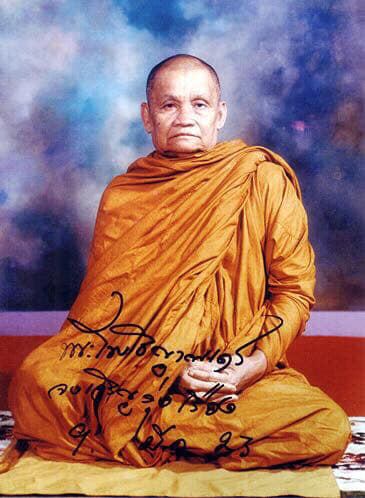
(The late Venerable Ajahn Chah Subhaddo or Phapothiyarnthera – a well-known Thai teacher of meditation. Photo credit: https://bit.ly/3moVj2M)
How does meditation practice develop the mind? | Phra Ajahn Amaro | Ajahn Chah’s Discipline
Attributes of a Concentrated Mind
The main purpose of mental training is to generate and increase the quality and capacity of the mind. A concentrated mind is strong, powerful, tranquil, peaceful, clear, pristine, malleable, and well-suited for the work of insight, since it is free from stress, rigidity, disturbance, confusion, agitation, and anxiety.
According to Buddhadhamma (see hyperlink p. 1371), the Buddha said that the reward of concentration is knowledge and the ability to see things as they really are. Furthermore, concentration, when imbued with wisdom and morality, has other great rewards and blessings, allowing the mind to become completely free from sensual desire, the craving for existence (Pali: bhavatanha), and ignorance (Pali: moha). Especially to Buddhists who believe in choosing to do only what is good and are interested in only actions that would lead to progress on the path towards enlightenment, the benefits of meditation are clearly appealing.
Benefits of Meditation
The book Path of Freedom describes the benefits of meditation as follows: contentment with the truth and the present reality; enjoyment of all things through a proper mindset; acquisition of clairaudience, clairvoyance, mind-reading (Pali: manomayiddhi), and a recollection of past incarnations (Pali: atitangsanana); progress towards perfection (Pali: paramita), and progress in the cycle of rebirth (Pali: vaththa). Through meditation, one is sure to be reborn in a higher realm, as his or her mind becomes free from defilements (Pali: kilesa), cravings (Pali: tanha), and attachments (Pali: upadana), and will ultimately achieve enlightenment (Pali: bodhi).
The book Buddhadhamma (see hyperlink p. 1,371 and hyperlink pp. 1435-1436) classifies, though slightly different from the above but no less appealing, the benefits of Buddhist meditation into four categories. They are freedom from all suffering and mental impurities; the development of exceptional psychic abilities such as clairaudience and clairvoyance; better mental health, by increasing one’s inner strength, i.e. decisiveness, resilience, tranquility, calmness, lovingkindness, compassion, and discernment; and, finally, calmness and control of the mind. Clearly, the benefits are no less appealing.
Read more : 141 benefits of meditation.
Read more : 5 Health Benefits of Daily Meditation According to Science.
This article excellently contains the following topics:
- A Look at the Benefits of Meditation
- What Does the Latest Research and Science Show?
- 4 Interesting Studies
- 5 Proven Health Benefits of a Daily Practice
- The Benefits on Mental Health and Psychological Well-Being
- The Neurological Benefits Meditation Has on the Brain
- A List of the Proven Physical Health Benefits
- Can Meditating Before Bed Improve Sleep?
- How does it Help with Stress?
- The Known Benefits for Anxiety and Depression
- How Can Meditation Practice Help During Pregnancy?
- Are there Scientifically Proven Benefits for the Skin?
- Is There a Particular Meditation Practice Proven to be the Most Beneficial?
- The Benefits of Meditating in the Morning
- How often is Optimal? Everyday? Twice a Day?
- Are there Proven Benefits to Doing Meditation in Groups?
- What are the Benefits for Kids?
- How Can Schools and Colleges Benefit from a Meditation Program?
- How Meditation Can Benefit Teenage Students
- The Benefits of Meditation in the Workplace
- 3 Journal Articles for Further Reading.
Read more : How Does Meditation Change the Brain? (by Scientific American).
Benefits of Meditation including scientifically proven meditation benefits of Vipassana Meditation
How mindfulness meditation reshaped her brain | Catalyst.
Meditation’s Impact on the Brain | Documentary Clip
Buddhadasa Bhikkhu #Anapanasati and Its benefits. (A lecture in Thai with English translation)
Anapanasati and Its benefits
How to Meditate
Although meditators can employ one of the forty meditation techniques, the kind of meditation that will be discussed in this section is Mindfulness Meditation (Pali: anapanasati), a form of meditation that focuses on only breathing. Mindfulness Meditation can be done in at least four postures: seated, walking, standing, or lying down.
ACRD_105 Aj Siripunnyo – Walking Meditation Practice
Walking Meditation in Nature with Sister Sinh Nghiem | Plum Village Online Retreats
Sleeping (Lying) Meditation Pose
Since Mindfulness Meditation uses only the breath, a natural part of every person’s life, it can be practiced anytime, anywhere. All a practitioner needs to do is focus on the breathing, thus making this kind of meditation possible and even appealing to those who are tired or without equipment but desire the immediate effects of a meditation practice no matter where they are. As in all forms of meditation, in Mindfulness Meditation, the body becomes relaxed and rested, and the mind experiences progressively deeper levels of peace as the breath gradually becomes refined (to the point where it can become almost imperceptible).
The Buddha often encouraged monks to practice Mindfulness Meditation, while he himself practiced it both before and after his enlightenment. He instructed monks to go to the forest, the foot of a tree, or an empty hut; then, to sit with legs folded in a cross, straighten their body, and focus on the breath. They would mindfully inhale and exhale while silently verbalizing to themselves, “I am inhaling deeply” or “I am exhaling deeply,” as the deep inhalations or exhalations occur.
Sitting – particularly in the lotus position – is the most preferred meditation pose. In this position, the upper body is erect, the eighteen vertebrae are aligned, and tissues and tendons are not twisted. Granting a great degree of physical relaxation, stability, balance, and ease, this posture contributes to a minimum level of fatigue.
To establish the lotus position, the practitioner places his or her ankles up against the lower abdomen. Both legs can overlap to yield a “full lotus” position, or only the right leg may come on top of the left leg, yielding a “half lotus” position. Hands are placed by the practitioner’s lower abdomen, with the right hand on top of the left, and the two thumbs gently touching or with the right index finger gently touching the left thumb. Beginners may find this posture to be most beneficial, but if it is uncomfortable, they can also sit upright in a chair or choose another position. What is important is that signs of tension and physical stress be rectified and changed into a more comfortable position before proceeding with the rest of the meditation.


Mindfulness Meditation can be practiced with eyes open or closed. The choice depends on what gives a sense of ease and does not lead to distraction. If a practitioner would like to keep his or her eyes open, then he or she may try to look down at the ground or at the tip of his or her nose, for instance, finding what feels comfortable and not distracting. Then, he or she should slowly inhale a few times, generating a sense of inner spaciousness and clarity. These fundamentals established, the concentration on the breath can begin.
When beginning to pay attention to the lengths of the breaths, counting will help to keep the mind focused. Counting is separated into two stages. In the first stage, one counts slowly and relaxedly. The recommended strategy here is to count to no fewer than five and no more than ten, and to count the numbers in order. (If one counts to less than five, the mind can have insufficient time and space to settle; if one counts to more than ten, the mind can become anxious about counting rather than stay with the breathing; and if one counts in a disconnected manner, the mind gets confused). To begin counting, one counts the inhalations and exhalations in pairs – exhalation 1, inhalation 1, exhalation 2, inhalation 2, for instance – until one reaches five of each. Then one begins again, until one reaches six of each, and so on. One keeps adding another pair until one reaches ten of each, and then one returns to the original five pairs. In other words, one repeats the following cycle:
1-1, 2-2, 3-3, 4-4, 5-5
1-1, 2-2, 3-3, 4-4, 5-5, 6-6
1-1, 2-2, 3-3, 4-4, 5-5, 6-6, 7-7
1-1, 2-2, 3-3, 4-4, 5-5, 6-6, 7-7, 8-8
1-1, 2-2, 3-3, 4-4, 5-5, 6-6, 7-7, 8-8, 9-9
1-1, 2-2, 3-3, 4-4, 5-5, 6-6, 7-7, 8-8, 9-9, 10-10
1-1, 2-2, 3-3, 4-4, 5-5
1-1, 2-2, 3-3, 4-4, 5-5, 6-6…
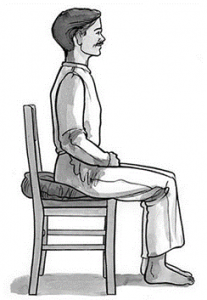
In the second stage, one counts in a quicker succession: when the inhalations and exhalations are clear, (i.e. when the attention rests with the breathing, one ceases to count using the same number twice, as described above and begins to count single numbers). Here the practitioner does not need to pay attention to the entire process of breathing – he or she instead focuses only on the breath as it reaches the tip of the nostrils. First, he or she counts from one to five, then from one to six, adding another number in each sequence until he or she reaches ten; then he or she returns to counting from one to five. Counting in this way, one’s meditation will be more connected, as if it has no gaps. One keeps one’s attention solely on the spot where the breath makes contact with the skin, either at the tip of the nostrils or at the upper lip (wherever there is a clear sensation). The counting can be illustrated as follows:
1, 2, 3, 4, 5
1, 2, 3, 4, 5, 6
1, 2, 3, 4, 5, 6, 7
1, 2, 3, 4, 5, 6, 7, 8
1, 2, 3, 4, 5, 6, 7, 8, 9
1, 2, 3, 4, 5, 6, 7, 8, 9, 10
1, 2, 3, 4, 5
1, 2, 3, 4, 5, 6…
One counts in this way until one reaches a point where, although one has ceased counting, mindfulness is still firmly established on the breath.
When attention is established on the breath, the practitioner stops counting and mindfully takes note of the breath in an uninterrupted stream. “Taking note” here does not mean following the breath with attention through its various stages of beginning, middle, and end, as it passes through the nose, travels through the upper chest, and reaches the navel, and then returns from the belly area to the chest and finally out through the nose. By doing so, the body and mind would become agitated, rendering the practice ineffective. The correct way to take note of the length of the breaths is to mindfully observe the breath at the point of contact (at the tip of the nostrils or at the upper lip.) When one establishes attention at the point of the breath’s contact, refraining from following the complete circuit of the breath, he or she is fully aware of the cycle of breathing in a way that bears greater fruit. (See more in the hyperlinked Buddhadhamma, pp. 1441-1445)
Many Thai practitioners prefer to silently think bud during inhalations and dho during exhalations, leading to Mindfulness Meditation also being called “the Buddho meditation” in Thailand.
Read more : A Brief Introduction to the Buddha-Dhamma.
Suggestion on how to meditate | Ajahn Kevali | Ajahn Chah’s discipline | Wat Pah Nanachat
Motivation in Meditation
How Often and How Long One Should Meditate
Ideally, meditation should be practiced daily. The duration, however, varies, depending on the source studying the effects of meditation. Some sources recommend at least ten minutes each day, while saying that a half an hour each day would be closer to ideal. Some sources recommend that beginners start with five minutes of meditation per day; then, as the mind gets used to the practice, they could increase the time span by a minute or two each day, aiming for a 15-minute practice after a week. This amount of time works for many people to calm down their mind.
Some sources, such as Mindfulness in Plain English by Bhante Gunaratana, advise beginners to start with twenty to thirty minutes in their first sessions and gradually extend to an hour after a year. Others, such as Madhuleena Roy Chowdhury, writing in Positive Psychology, suggest that even two minutes per day can be enough for somebody just starting.
Read More : How Does Meditation Reduce Anxiety at a Neural Level?
Longer sessions appear to increase the benefits of meditation. Research shows that a session of 27 minutes of Mindfulness Meditation may lead to structural changes in key areas of brain, such as in the hippocampus, the posterior cingulate cortex, the temporo-parietal junction, and the cerebellum, which are involved in learning and memory, emotion regulation, the sense of self, and perspective-taking.
Read More : What Can 11 Hours of Meditation Training Do? It Can Rewire Your Brain.
Read More : Meditation Can Change Your Brain for Better & Longer.
Read More : How long should I meditate each day?
Where to Study Buddhism and Meditation in Thailand
In Thailand, there are many temples and meditation centers where one can study Buddhism and practice meditation at the same time. Over a hundred temples offer lessons on both Buddhism and meditation practice. Forest monasteries often provide free meditation lessons, including free room and board. However, not many temples provide instruction in both Thai and English. The list below shows where it may be possible to study both Buddhism and meditation in English:
1. Wat Mahathat (Section 5, วัดมหาธาตุยุวราชรังสฤษฎิ์ คณะ 5), in Bangkok. Tel.: 02-2226011, http://www.watmahathat.com/vipassana-meditation/ (The website is a Thai/English bilingual.)

(Photo credit: http://dhammathai.org/watthai/bangkok/watmahatat.php)
2. Wat Phra Dhammakaya (วัดพระธรรมกาย), in Pathum Thani Province, north of Bangkok, https://en.dhammakaya.net/ (The website is in English.)

(Photo credit: https://bit.ly/34szerN)
3. Wat Phra Dhatu Sri Chomtong Voravihara (วัดพระธาตุศรีจอมทองวรวิหาร), in Chiang Mai Province, tel.: 053-342186, https://www.watchomtong.com (The website is in Thai and English.)

(Photo credit: https://bit.ly/3uw6fxY)
4. Wat Phra That Doi Suthep (วัดพระธาตุดอยสุเทพราชวรวิหาร), in Chiang Mai Province, tel.: 053-295912.

(Photo credit: https://bit.ly/34GMKbz)
5. Wat Bhaddanta Asabharam (วัดภัททันตะอาสภาราม), in Chon Buri Province, tel.: 086-8198358, https://www.watbhaddanta.com/ (The website is in Thai only).
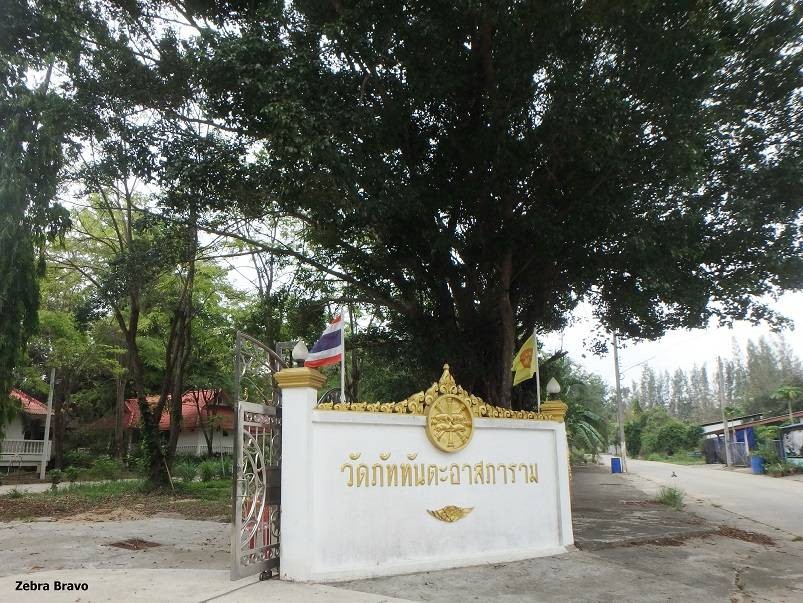
(Photo credit: https://bit.ly/2SEIczD)
6. Wat Umong (วัดอุโมงค์ สวนพุทธธรรม), in Chiang Mai Province, tel.: 085 033 3809. Email: [email protected].

(Photo credit: https://www.chillpainai.com/scoop/7415/)
7. Wat Pah Nanachat (International Forest Monastery วัดป่านานาชาติ), in Ubon Rachathani Province, https://bit.ly/3perzqx (The website is in English). (Photo credit: https://bit.ly/3fZr8MO)

(Photo credit: https://bit.ly/3fZr8MO)
8. Wat Pha Tam Wua (วัดป่าถ้ำวัว), in Mae Hong Son Province, tel.: 081 031 3326 https://www.wattamwua.com/contact/
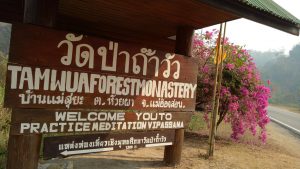
(Photo credit: https://pantip.com/topic/36196208)
9. The Young Buddhists Association of Thailand (YBAT) – Under Royal Patronage, Bangkok, tel.: 0 2455 2525. Website: www.ybat.org/eng/

(Photo credit: https://web.ybatnet.org/th/news/detail.php?id=431&page=1)
10. Wat Nong Pah Pong in Ubon Ratchathani Province, which was established by the late Venerable Ajahn Chah Subhaddo in 1954, tel. 0 4532 2729, http://watnongpahpong.org/indexe.php
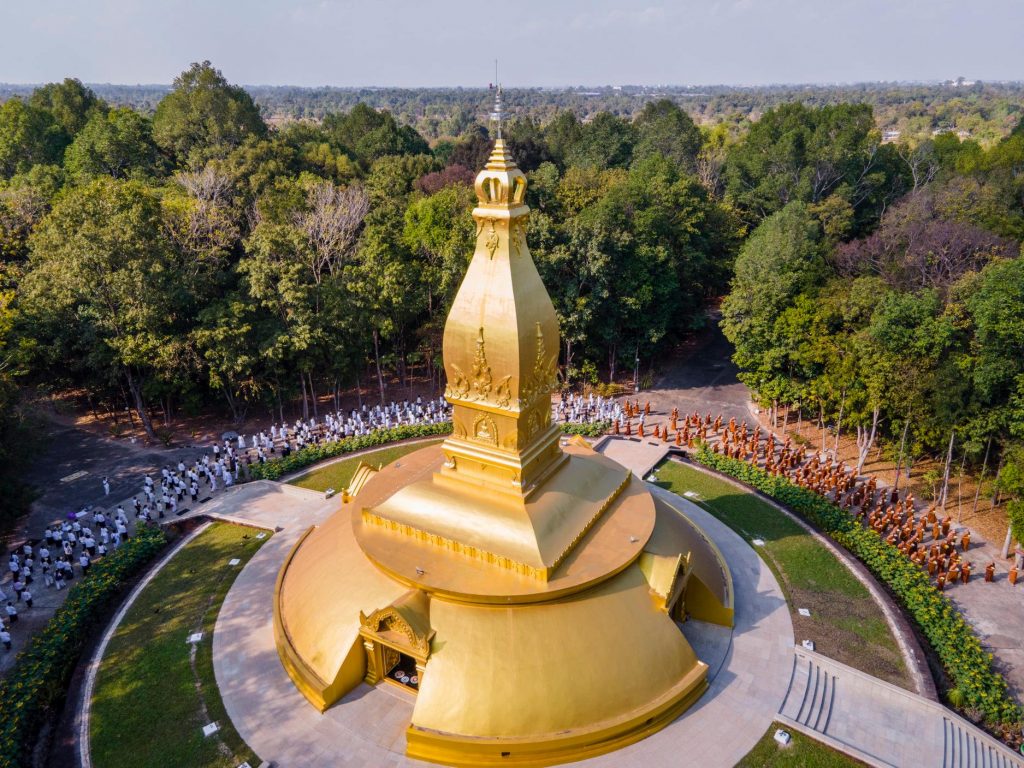
(Photo credit: วัดหนองป่าพง วารินชำราบ อุบลราชธานี – หน้าหลัก | Facebook)
For further reading, please view the section “Further Reading” below. Here, the author would like to highlight a particularly useful text – The Nectar of Truth: A Selection of Buddhist Aphorisms, which is an excellent collection of Buddhist aphorisms, in Thai and English, compiled by P. A. Payutto. The book’s Table of Contents alone – shared here – reflect its breadth and depth:
- Human Beings
- Self-Training and Self-Responsibility
- The Mind
- Education
- Wisdom
- Earning a Living and Building a Career
- Making Efforts and Doing Duties
- Family, Relatives, and Friends
- Keeping Company
- Harming and Helping
- Harmony
- Government
- Merit & Demerit; Righteousness & Unrighteousness; Virtue & Vice
- Deeds
- Defilements
- Goodness
- Speech
- Life and Death
- Deliverance from Suffering and Experience of Bliss
Reference
- Buddhadhamma, p. 1359
AUTHOR
Paitoon Songkaeo, PhD


